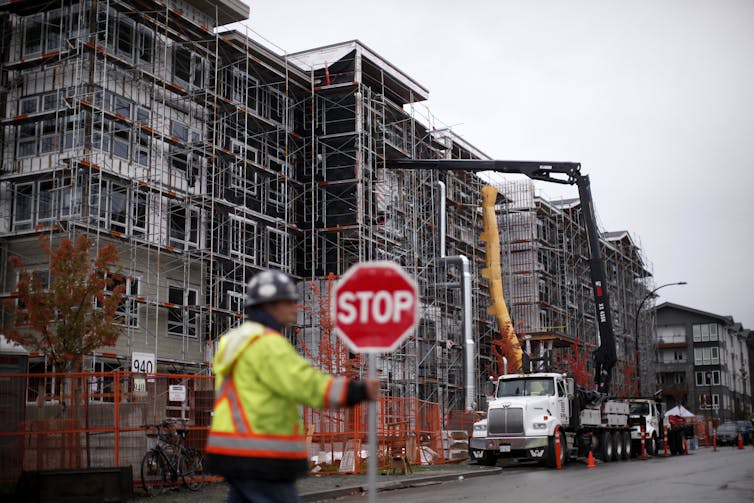After navigating the challenges of the COVID-19 pandemic, Canadians now find themselves facing still more challenges that impact their daily lives on almost every front.
These include an economy under pressure, a warming planet, a strapped health-care system and transforming workplaces.
For policy-makers, there are no easy, off-the-shelf answers. The policy environment in the late pandemic and post-pandemic era poses new obstacles to effective policy development — unless we adapt.
Our new environment is characterized by three key features.
A trio of challenges
First, we’re in a time of declining trust in public institutions and their leaders.
One recent survey found that more than half of respondents agreed that “official government accounts of events can’t be trusted.”
Furthermore, policy-makers are grappling with increasingly complex and interrelated challenges that demand co-ordinated, sustained inter-governmental effort.
Finally, the compounding impacts of global problems like climate change mean we’re also facing a more uncertain policy environment in which long-term planning is increasingly difficult.
The first report published by the newly launched CSA Public Policy Centre, where I hold an executive position, suggests this outlook will make it harder for governments to implement effective programs and policies while the imperative to deliver on critical issues is greater than ever.
Every delayed or ineffective effort at bolstering the financial security of Canadians, including delivering affordable housing units, risks a further erosion of public trust and undermines future efforts at public engagement and outreach.

Policy strain
Canada’s existing approaches to policy-making have been showing strain for some time.
Many Canadians struggle to access pharmacare and mental health services — as many as half of Canadians wait upwards of a month to receive needed mental health supports.
Our employment insurance system was also designed for a labour market that no longer exists and leaves too many part-time, temporary and self-employed workers behind.
There is general consensus on the challenges before us and what goals we want to achieve. What’s less understood and little changed in decades, are the mindset, culture and tools available to policy-makers to successfully achieve their objectives.
Here are three opportunities for policy-makers to consider.
1. Focus on the long term
Many of the issues we are confronted with today are the consequences of a prevailing mindset marked by a short-term approach and a failure to equitably consider the needs of people — especially the most vulnerable — in the decision-making process.
Climate change is a good example, with future generations set to bear the greatest costs of insufficient actions today.
Refocusing on the long term impacts of choices made today and how they affect different communities requires a shift in mindset, as well as thoughtful engagement of more diverse perspectives. Done well, meaningful engagement can not only lead to better program and policy results, but also help rebuild trust in public institutions, especially among marginalized communities.
2. Respond faster to emerging issues
The lag between an emerging policy issue and a policy response is growing as challenges become more complex and their impacts more uncertain. Emerging technology changes human behaviours at record speed, making it difficult for regulators to rely on traditional tools to protect citizens while also fostering innovation.
Traditional models of policy-making cannot anticipate an array of complex challenges. Digital platforms like Uber and Airbnb are an example.
They scaled up so quickly a decade ago, disrupting sectors, before policy-makers could develop regulatory frameworks that accounted for medium and long-term issues such as increased gridlock on city streets and a reduction in affordable rental stock.
Implementing practices of regulatory innovation, which create space for policy-makers to experiment, can help bridge the gap between emerging issues and policy responses.

3. Broaden collaboration
Most pressing policy challenges are complex, cutting across departments and jurisdictional boundaries. Yet policy solutions are rarely conceived of with this in mind. Traditional policy-making tools restrict and limit the opportunities for potential solutions and breakthroughs.
There is a need to significantly improve data sharing and collaboration within government and trusted partners to understand difficult problems.
For example, a key challenge to ending homelessness is getting an accurate picture of how many people experience it. To this end, the B.C. Data Innovation Program has developed an integrated data project to better understand and respond to homelessness.

Using administrative data for the first time has allowed the B.C. government to generate an estimated number of people experiencing homelessness. This evidence base leads to better policy decisions and service delivery.
A new environment calls for new approaches to policy-making that can more effectively navigate the complexities of today’s world. Many of our foundational policies and programs were designed decades ago and have remained largely unchanged.
We know what we need to do. Now is the time to revisit how we do it.
Policy-makers must change direction fast in the post-pandemic era - The Conversation
Read More
No comments:
Post a Comment